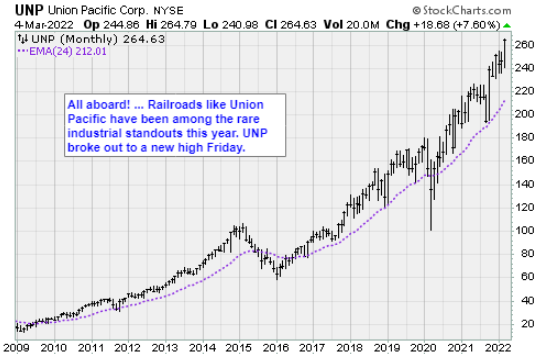The S&P 500 (SPX) slipped 0.80% lower on Friday, yet it could have been so much worse for bulls, states Jon Markman, editor of Strategic Advantage.
The close at 4,328 was well off the session low of 4,285 and very near the best level of day.
While bulls must be frustrated that they can’t lift the benchmark above its 200-day moving average at 4,460, bears should also be equally discouraged that early weakness does not follow through. This is especially pertinent amid the war in Ukraine and rising commodity prices. Crude oil surged to $115 on Friday as Russian troops moved closer to the country's capital.
The bottom line is that the trading range persists. The top of the range for the benchmark S&P 500 is at 4,460. The bottom is 4,222, the January 24 low.
The Upshot
The Nasdaq (NQ=F) fell 1.7% at 13,313 on Friday to end 2.8% lower for the week. The Dow (DIJ) fell 0.5% to 33,614, finishing with a weekly loss of 1.3%.
Breadth favored decliners three-one, and there were 911 new lows vs 278 new highs. Big caps on the new high list included Exxon Mobil (XOM), Chevron (CVX), PetroChina (PTR), Union Pacific (UNP), and ConocoPhilips (COP). Basically energy and railroads.

The US 10-year note yield (TNX) sank 8.6 basis points to 1.76%, and gold added 1.9% to $1,972.20 per troy ounce, reflecting the risk-off sentiment in the market.
While Russian securities have sold off since the invasion began, the opportunity to buy into this selloff is almost non-existent, Barron's reported. Russian lender Sberbank is one of 70 listings suspended by the London Stock Exchange this week, with shares of the bank and many of its peers also halted by the Financial Industry Regulatory Authority in US over-the-counter markets.
Meanwhile, the S&P 500 & Dow Jones Indices said they are dropping all Russian stocks from its benchmarks, which is a big deal.
In economics news, US payrolls shot up the most in seven months in February, with gains mainly concentrated in the services sector, the government said Friday. Nonfarm employment climbed by 678,000 jobs, well above estimates. "The US labor market is experiencing a noticeable upswing," Commerzbank economists Christoph Balz and Bernd Weidensteiner wrote in a note. "Overall, employment is increasing at a much faster pace than before the pandemic."

















